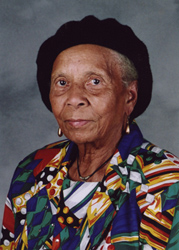The "Old Settlers" felt the habits and behaviors of the new migrants were an embarassment to the Afro-American community. As a result, the Chicago Defender printed articles and cartoons to teach the "New settlers" the proper social behaviors they should manifest now that they lived "up" North in Chicago. Below is a lesson teachers can use to teach students about the intraracial bias that existed between "Old" and "New" Settlers in Chicago during the Chicago Black Renaissance.
Lesson Plan:
“ As Others Know Us”
Agenda
1. Review previous lesson
2. Distribute Jay Jackson’s Cartoon: Untouchable
(1934 ).
3. Guide Students in close read of Jay
Jackson’s Cartoon: Untouchable (1934).
4. Students continue the close read and
explain how this cartoon relate to “Old Settler” bias
the Great Migration
Lesson
Plan
CCSS Standards
CCSS.ELA-LITERACY.RH.6-8.6
Identify aspects of a text that reveal an author's point of view or purpose (e.g., loaded language, inclusion or avoidance of particular facts).
Identify aspects of a text that reveal an author's point of view or purpose (e.g., loaded language, inclusion or avoidance of particular facts).
CCSS.ELA-LITERACY.RH.6-8.7
Integrate visual information (e.g., in charts, graphs, photographs, videos, or maps) with other information in print and digital texts.
Integrate visual information (e.g., in charts, graphs, photographs, videos, or maps) with other information in print and digital texts.
Review Yesterdays assignment. T. Write key
vocabulary terms: bias, prejudice, culture, community, norm and satirist on the
board to review their meaning(s).
Tell
students to place their dictionaries on their desk. Discuss the vocabulary
items. First, ask students what they think each word means. Next chose a
different student to look up a vocabulary word and read the definition to the
class. Make sure that students understand the definitions of prejudice and
bias. The definitions are Prejudice: preconceived opinion that is
not based on reason or actual experience ; and Bias: prejudice in favor of or against one thing, person, or group
compared with another, usually in a way considered to be unfair
Teacher
write on the board: “Old Settler Bias and the Great Migration”. Ask the students, “Can people belonging to the
same race be prejudice and biased
towards members of their own race”?. Guide students during the
discussion to the understanding, that many “Old Settlers”, people who had lived
in Chicago for years held prejudicial ideas about recent rural migrants from the South settling in
Chicago.
T.
Introduce Jay Jackson. Explain that he was a cartoonist of the Chicago Defender
Newspaper.
Tell
students that Jackson wrote a series called “As Others see Us”, directed at
recent rural migrants to Chicago.
Let them
know that the “As Others see Us”,
cartoons reinforced what
“responsible” Afro-Americans in the “Old Settler” population in Chicago, considered
to be proper social behaviors for Bronzeville residents to maintain Social
Conformity in the Bronzeville community.
T. After this discussion distribute Jay
Jackson’s “As others see Us”; “Untouchable (1934), newspaper cartoon. Explain
that lightening cream was used by many dark Afro-American females to brighten
their skin tone.
Students work
individually or in pairs using information from the visual text to evaluate the
images and text, and make inferences about their meaning(s). Exit Slip:
Completed worksheet.
Assessment: During discussion use oral Questioning
Strategy and S. written response to the “Untouchable” cartoon.
 Caption Under the
Cartoon reads:”Way down in the land of Cotton where your race can’t be
forgotten are a happy lot of Critters
living on cornpone and fritters. All are colored front to back. But some are
light and some are black. And there by hangs a sad tale that makes me gnash my
teeth and wail. The light altho they can’t be white, won’t treat the darker
brother right they put such value on the face, they form a race within a race
I’ll bet our Nordic neighbors think they’ve found at last the missing link”.
Caption Under the
Cartoon reads:”Way down in the land of Cotton where your race can’t be
forgotten are a happy lot of Critters
living on cornpone and fritters. All are colored front to back. But some are
light and some are black. And there by hangs a sad tale that makes me gnash my
teeth and wail. The light altho they can’t be white, won’t treat the darker
brother right they put such value on the face, they form a race within a race
I’ll bet our Nordic neighbors think they’ve found at last the missing link”.
There are two side panels. In
the bottom side panel titled 'Ain't Nature Wonderful' panel, we see three female performers wondering what amount of
lightening cream they should apply so that they
can “ get light over night”. In a side panel above 'Ain't Nature Wonderful' panel, a southern white declares “Look what
I started”.
Assignment
“As Others see Us”,
were cartoons published in the Chicago
Defender that reinforced what “responsible” Afro-Americans considered to be
proper social behaviors for Bronzeville residents to maintain Social
Conformity. This cartoon is titled “Untouchable (1934). In the 1920s-1960s, lightening
cream was used by many dark Afro-American females to brighten their skin tone.
Make a close read of this cartoon. Work
individually or in pairs using information from this cartoon to evaluate this
text. Using evidence from the cartoon to make inferences about the meaning(s)
the artist had behind certain images in the cartoon and determine if these
images are evidence of “Old Settler” bias and prejudice directed at the “New”
migrants. In listing the biased elements in the cartoon, explain why you belief
an image is evidence of bias.





